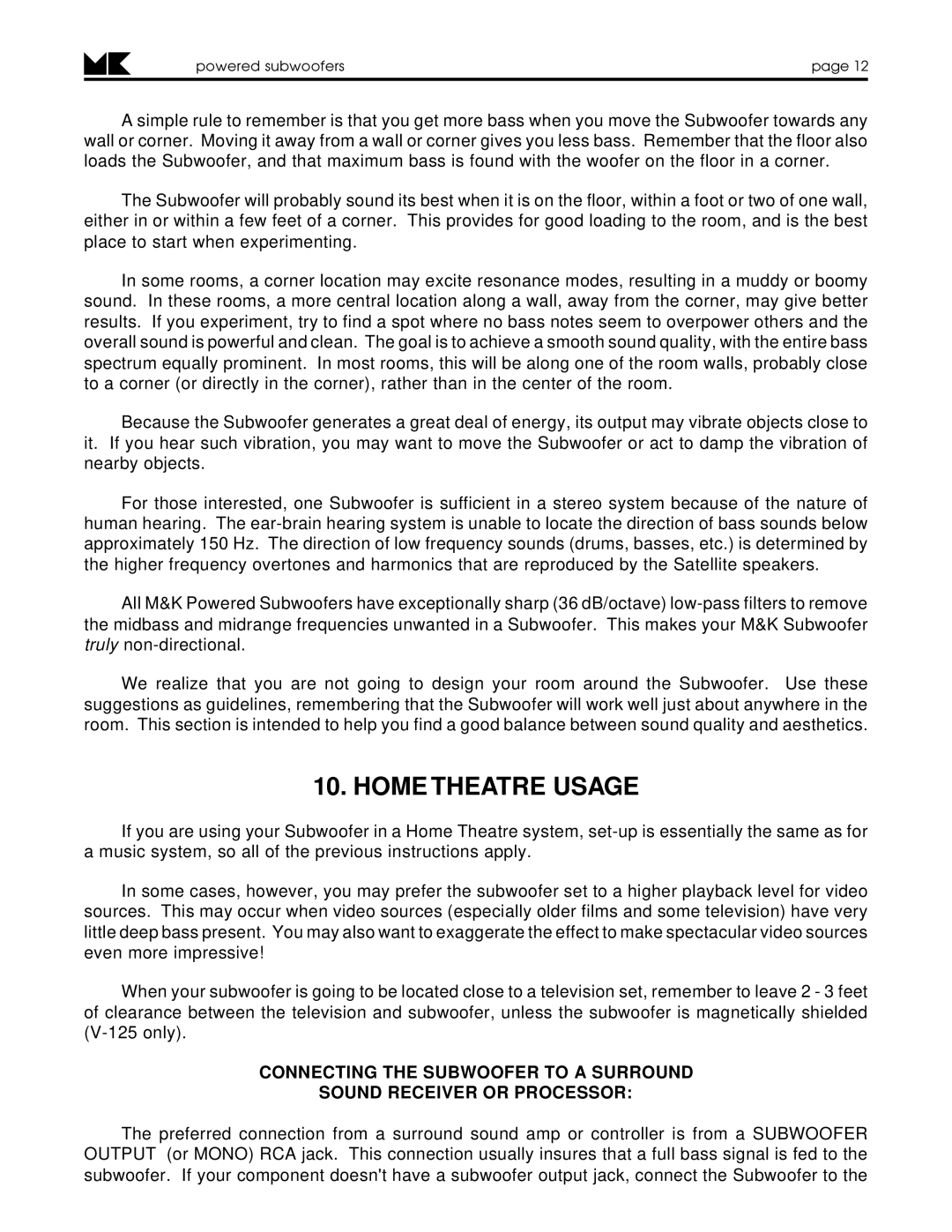|
| powered subwoofers | page 12 |
|
|
|
|
A simple rule to remember is that you get more bass when you move the Subwoofer towards any wall or corner. Moving it away from a wall or corner gives you less bass. Remember that the floor also loads the Subwoofer, and that maximum bass is found with the woofer on the floor in a corner.
The Subwoofer will probably sound its best when it is on the floor, within a foot or two of one wall, either in or within a few feet of a corner. This provides for good loading to the room, and is the best place to start when experimenting.
In some rooms, a corner location may excite resonance modes, resulting in a muddy or boomy sound. In these rooms, a more central location along a wall, away from the corner, may give better results. If you experiment, try to find a spot where no bass notes seem to overpower others and the overall sound is powerful and clean. The goal is to achieve a smooth sound quality, with the entire bass spectrum equally prominent. In most rooms, this will be along one of the room walls, probably close to a corner (or directly in the corner), rather than in the center of the room.
Because the Subwoofer generates a great deal of energy, its output may vibrate objects close to it. If you hear such vibration, you may want to move the Subwoofer or act to damp the vibration of nearby objects.
For those interested, one Subwoofer is sufficient in a stereo system because of the nature of human hearing. The
All M&K Powered Subwoofers have exceptionally sharp (36 dB/octave)
We realize that you are not going to design your room around the Subwoofer. Use these suggestions as guidelines, remembering that the Subwoofer will work well just about anywhere in the room. This section is intended to help you find a good balance between sound quality and aesthetics.
10. HOME THEATRE USAGE
If you are using your Subwoofer in a Home Theatre system,
In some cases, however, you may prefer the subwoofer set to a higher playback level for video sources. This may occur when video sources (especially older films and some television) have very little deep bass present. You may also want to exaggerate the effect to make spectacular video sources even more impressive!
When your subwoofer is going to be located close to a television set, remember to leave 2 - 3 feet of clearance between the television and subwoofer, unless the subwoofer is magnetically shielded
CONNECTING THE SUBWOOFER TO A SURROUND
SOUND RECEIVER OR PROCESSOR:
The preferred connection from a surround sound amp or controller is from a SUBWOOFER OUTPUT (or MONO) RCA jack. This connection usually insures that a full bass signal is fed to the subwoofer. If your component doesn't have a subwoofer output jack, connect the Subwoofer to the
